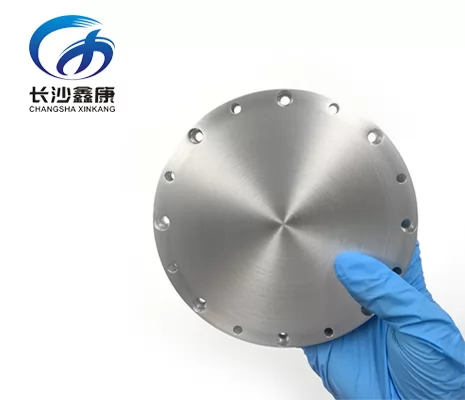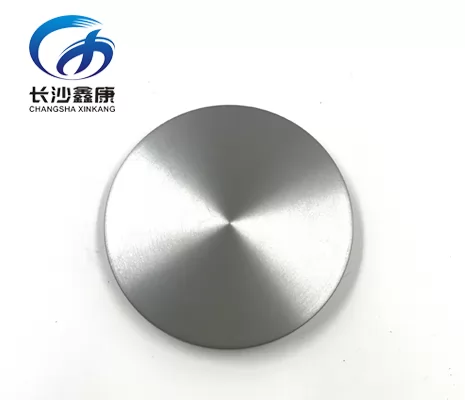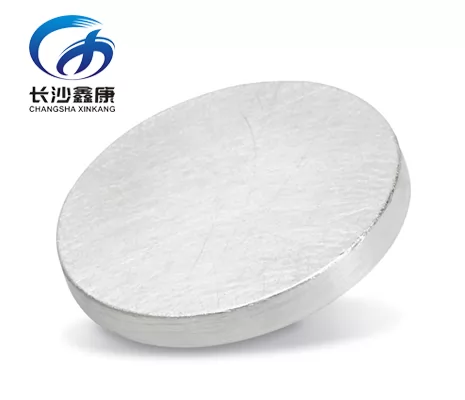


.png)

-
 +86-731-84027969
+86-731-84027969 -

-
 info@xk-sputteringtarget.com
info@xk-sputteringtarget.com



Making a sputtering target involves several steps to create a high-quality material that can be used for thin film deposition processes. Sputtering targets are typically used in physical vapor deposition (PVD) techniques to deposit thin films onto substrates. Sputtering targets encompass a diverse array of materials, spanning pure metals, alloys, oxides, sulfides, selenides, borides, carbides, silicides, tellurides, nitrides, and fluorides. The selection of the appropriate material hinges upon the specific characteristics sought in the resultant deposited thin film. Among the frequently utilized materials for sputtering targets are gold, silver, copper, aluminum, titanium, and nickel.
Materials Needed:
☑ High-purity metal or compound powders (e.g., metal, oxide, nitride, etc.).
☑ Binder materials (typically polymer-based).
☑ Mixing equipment (ball mill, planetary mixer, etc.).
☑ Die or mold for shaping the target.
☑ Cold isostatic pressing (CIP) equipment.
☑ Sintering furnace.
☑ Machining and finishing tools.
1. Powder Preparation:
Obtain high-purity metal or compound powders. The purity of the powder is crucial to achieve a uniform and defect-free thin film deposition. Contaminants can lead to defects in the film. The powders are often purchased or synthesized through various chemical processes.
2. Powder Mixing:
Mix the high-purity powders with binder materials to create a homogeneous mixture. Binders help hold the powder particles together during subsequent processing steps. The mixture is usually done in a ball mill or a planetary mixer.
3. Shaping the Target:
Place the mixed powder and binder mixture into a die or mold that matches the desired shape and size of the sputtering target. The target's shape can vary depending on the deposition system it will be used with.
4. Cold Isostatic Pressing (CIP):
Apply uniform pressure to the mixture using cold isostatic pressing. This helps in compacting the mixture and removing any air voids or gaps between the particles. The pressure is applied from all directions to ensure the target has a consistent density.
5. Binder Removal:
After CIP, the green target is removed from the mold. The binder material must be removed to prevent contamination during sputtering and to achieve the desired density in the final target. Binder removal is typically done through a carefully controlled heating process called debinding.
6. Sintering:
Sinter the debound target in a controlled atmosphere furnace. Sintering involves heating the target to a high temperature, allowing the metal or compound powders to fuse together and form a dense, cohesive structure. This increases the target's mechanical integrity and thermal conductivity.
7. Machining and Finishing:
After sintering, the target might be oversized or have an uneven surface. Machining processes such as turning, milling, or grinding are used to achieve the final dimensions and surface finish required for the sputtering process.
8. Quality Control:
Perform quality control tests to ensure the target's purity, density, and structural integrity meet the specifications. Common tests include X-ray diffraction (XRD), scanning electron microscopy (SEM), and composition analysis.
9. Packaging:
Once the target meets quality standards, it is carefully packaged to prevent any damage during shipping and handling.

Aluminum (Al) Sputtering Target

Hafnium(Hf)Sputtering Target

Indium (In) Sputtering Target
.png)

.png)
.png)
Top 10 Sputtering Target Manufacturer in World 2023
Sputtering is a physical vapor deposition (PVD) process used for depositing materials onto a substrate, by ejecting atoms from sputtering targets and condensing the ejected atoms onto a substrate in a high vacuum environment.
How to Make Sputtering Target?
Making a sputtering target involves several steps to create a high-quality material that can be used for thin film deposition processes. Sputtering targets are typically used in physical vapor deposition (PVD) techniques to deposit thin films onto substrates.
Top 10 Custom Sputtering Target Manufacturers in 2023
Custom sputtering targets are designed to meet the specific needs of a particular application. They can be made from a variety of materials, with different shapes and sizes. Custom sputtering targets are often used in research and development, as well as in industrial applications.
Top 10 Sputtering Target Suppliers In Europe 2023
Sputtering targets are critical in various industries including semiconductor manufacturing, display technology, solar cells, optical coatings, magnetic storage media, aerospace, automotive and research.
.png)
